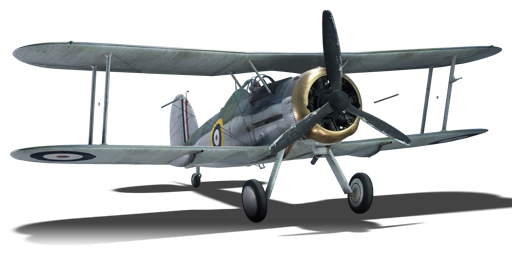



The Gloster Gladiator was a British biplane fighter developed during the interwar period. Initially a private venture by Gloster, the Gladiator was submitted to the RAF as a successor to the Gloster Gauntlet in 1935 and was accepted for production that year. Due to the shift to monoplane designs, however, the Gladiator was considered obsolete by the time it entered service in 1937. Despite this, the Gladiator saw considerable success both with the RAF and abroad, being exported to several countries (with some even seeing service on the Axis side), and producing several flying aces in the process. The Gladiator Mk II was a variant outfitted with the slightly uprated Bristol Mercury VIIIA engine compared to the Mk I with the Mercury IX engine. In total, 270 Gladiator Mk IIs were built.
The Gladiator Mk II has been in the game since the start of the Open Beta Test prior to Update 1.27. The Gladiator's standout features are its four 7.7 mm machine guns with access to incendiary rounds, capable of setting alight the wood-and-fabric aircraft that the Gladiator commonly faces. However, with rather average top speed, flight characteristics, and survivability for a biplane, the Gladiator may often struggle against either faster or more agile opponents that may outclass it in one way or another, especially monoplanes that can easily outrun it.
flaps
flaps
flaps
brake
control
| Belt | Belt filling | Armor penetration (mm) at a distance: | |||||
|---|---|---|---|---|---|---|---|
| 10 m | 100 m | 500 m | 1000 m | 1500 m | 2000 m | ||
| T/AP/AP-I/Ball/Ball/I | 13 | 12 | 7 | 3 | 2 | 0 | |
| T/AP/AP-I/AP-I/I | 13 | 12 | 7 | 3 | 2 | 0 | |
| IT/AP-I | 13 | 12 | 7 | 3 | 2 | 0 | |
| AP-I/AP-I/I | 13 | 12 | 7 | 3 | 2 | 0 | |












Flight performance | |
|---|---|
Survivability |
|---|
Weaponry |
|---|